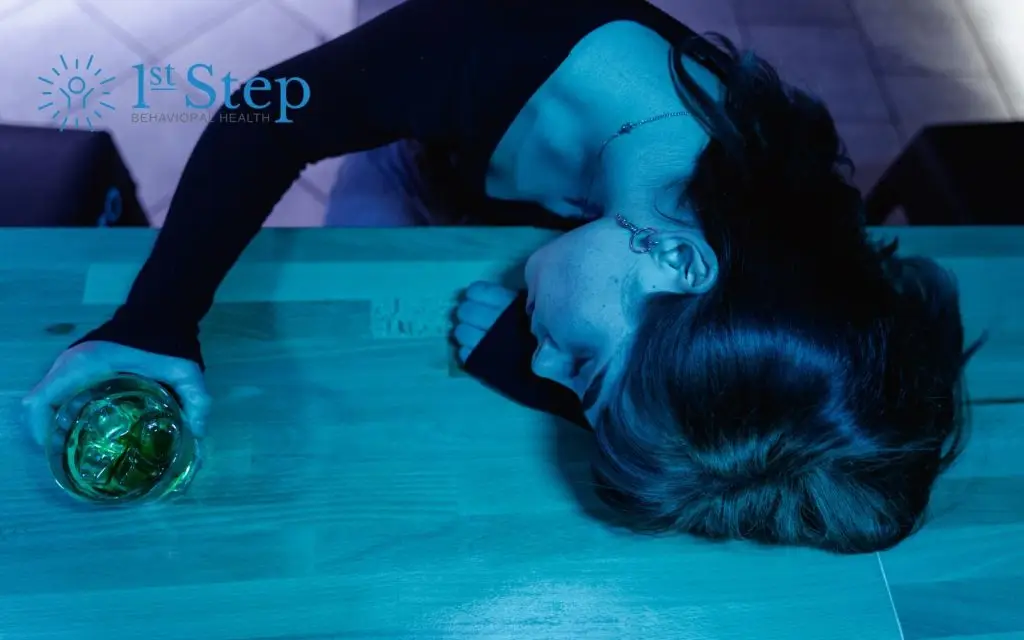National Institute on Drug Abuse (NIDA) research shows that people in the United States abuse alcohol and marijuana at higher rates than any other substances. People may abuse these substances to get their pleasurable effects, which include relaxation, social ease, and euphoria.
But what can happen if people use these substances at the same time?
Some call mixing alcohol and marijuana “getting cross-faded.” Young adults are most likely to abuse alcohol and marijuana at the same time. This dangerous habit can lead to serious, sometimes life-threatening, health risks and complications.
This article will explore what it means to get cross-faded. You will learn:
- The effects and risks of alcohol
- The effects and dangers of marijuana abuse
- The dangers of mixing marijuana and alcohol
- Where to find substance abuse treatment
If you or someone you love struggles with substance abuse, you are not alone. Contact the specialists at First Step Behavioral Health to explore our treatment programs. Learn about our rehab and recovery support programs, verify your insurance, or schedule an appointment by contacting us today.
What Does it Mean to be Cross-Faded?
People may use the term “cross-faded” to describe being drunk and high at the same time. Drinking alcohol and smoking marijuana (or using other THC products) can enhance THC levels in the blood, leading to more potent side effects.
People who combine alcohol and cannabis may experience a more intense “high” or euphoria from marijuana. They may experience desirable side effects, including:
- Feeling more self-confident in social settings
- Decreased inhibitions
- Feelings of spiritual connection or enlightenment
While some side effects of getting cross-faded may be pleasurable, some can be dangerous. People may experience:
- Delayed reaction times
- Poor motor skills
- Impaired judgment or lower inhibitions
- Poor decision-making ability
- Memory problems
People who are drunk and high at the same time are more likely to get into accidents or sustain injuries. They may take risks, including having unprotected sex or driving while intoxicated.
It is important to understand the risks of alcohol and cannabis abuse. People who combine these substances must seek treatment if they cannot stop on their own.
The Effects and Risks of Alcohol
Alcohol is legal for sale and use throughout most of the United States. Because it is legal and easily accessible, many people use–and abuse–this substance. Some people drink alcohol as part of a generally healthy lifestyle, and others misuse it.
Alcohol is a central nervous system depressant, meaning it slows CNS activity. Some of the short-term effects of alcohol include:
- Difficulty with memory and concentration
- Mood changes
- Lower core body temperature
- Elevated blood pressure
- Impaired judgment
- Reduced inhibitions
Alcohol intoxication can occur quickly. Binge drinking (drinking a lot of alcohol in a short period) can increase the risk of accidents, alcohol overdose, and other severe complications.
The Centers for Disease Control and Prevention (CDC) advises the public to abstain from drinking or limit their alcohol consumption. It recommends drinking only in moderation, if at all.
The CDC defines moderate drinking as:
- One or fewer alcoholic drinks per day for women
- Two or fewer alcoholic drinks per day for men
Regularly exceeding this amount can have dangerous effects on your mental and physical health. Heavy drinking means:
- Eight or more alcoholic drinks per week for women
- Fifteen or more alcoholic drinks per week for men
Long-term heavy drinking can increase a person’s risk of certain cancers, cardiovascular disease, high blood pressure, and other chronic health conditions.
The Risks of Marijuana Abuse
As more states pass laws to decriminalize or legalize marijuana and THC products, more people across the country have access to it. Marijuana is the second most commonly abused substance in the United States, after alcohol.
People may consume marijuana products in many ways. They may smoke, vape, eat, or drink products containing marijuana or its active ingredient, THC.
Cannabis can produce a range of physical and psychological side effects. Common side effects include:
- Relaxation
- Euphoria
- Heightened sensations
- Memory problems
- Impaired motor skills
- Impaired judgment
- Slow reaction times
People who use large doses of cannabis or THC products may experience unwanted or dangerous side effects. These include:
- Intense anxiety or panic
- Dilated pupils
- Increased heart rate
- Shaking
- Sweating
- Dizziness
- Difficulty breathing
- Nausea and vomiting
- Loss of coordination
People who combine alcohol and marijuana to get crossfaded are at greater risk for these unwanted side effects.
Combining addictive substances can be a sign of a serious substance use issue. People who combine marijuana and alcohol may require specialized treatment to overcome substance use disorder (SUD) and move forward.
Find Substance Abuse Treatment Now
If you or someone you love gets cross-faded or struggles with other types of substance abuse, you are not alone. Contact the specialists at First Step Behavioral Health to learn more about our programs or to schedule an intake appointment.
References:
- National Institute on Drug Abuse (NIDA): Commonly Used Drugs Charts
- National Institute of Health (NIH): Tetrahydrocannabinol (THC)
- National Institute of Health (NIH): Patterns of Cannabis and Alcohol Co-Use: Substitution Versus Complementary Effects
- Centers for Disease Control and Prevention (CDC): About Moderate Alcohol Use
- Science Direct: Comparative Effects of Alcohol and Marijuana on Mood, Memory, and Performance
Jump to a Section
Call (855) 425-4846
